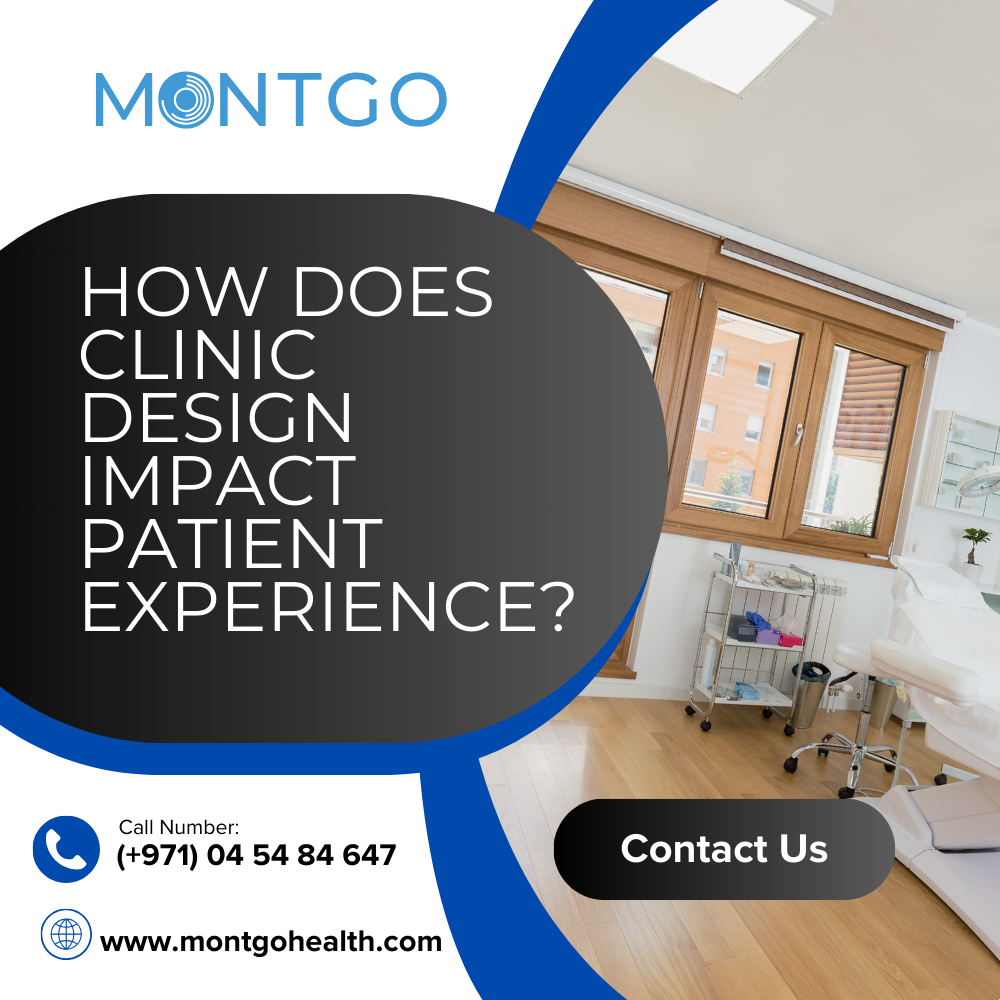When we think of a clinic, the first things that often come to mind are doctors, nurses, and medical equipment. However, one crucial element that is often overlooked is the design of the clinic itself. Surprisingly, clinic design plays a significant role in shaping patient experience, influencing everything from first impressions to emotional comfort and overall satisfaction. Blogs
First Impressions Matter
The patient journey begins the moment they step into the clinic. The waiting area, lighting, furniture, colors, and even the smell of the space create an immediate impression. A well-designed clinic with a welcoming reception, comfortable seating, and calming colors can help reduce anxiety and stress. On the other hand, dark, cluttered, or outdated spaces may make patients feel uneasy or even question the quality of care they will receive.
Comfort and Functionality
Comfort is key when it comes to healthcare settings. Clinics that focus on comfortable furniture, clear signage, and easy navigation help patients feel at ease and reduce confusion. Many patients already come with health concerns, and having to struggle with finding their way, standing for long periods, or sitting in uncomfortable chairs can worsen their anxiety. On the contrary, a thoughtfully designed space allows patients to feel cared for even before seeing the doctor.
Privacy and Personal Space
Privacy is another important aspect of patient experience. A poorly designed clinic may have open spaces where personal conversations can be overheard, making patients feel exposed or embarrassed. Modern clinics now incorporate private consultation rooms, soundproofing, and well-planned layouts to maintain patient confidentiality. Feeling safe and respected enhances trust in healthcare providers and the overall care experience.
Impact on Staff Efficiency
A well-designed clinic doesn’t just benefit patients — it also improves staff workflow. Smooth workflows reduce waiting times and prevent staff burnout, resulting in a better patient experience. For example, having examination rooms positioned near the waiting area, providing separate areas for staff-only tasks, and ensuring sufficient storage for medical supplies all contribute to efficient operations. When staff are less stressed and more organized, patients feel the difference through more attentive and timely care.
Promoting Healing Through Design
Research shows that the environment plays a role in healing. Natural light, indoor plants, soft color palettes, and calming artwork can help reduce blood pressure, stress, and anxiety. Many modern clinics now adopt biophilic designs — incorporating elements of nature — to promote a healing environment. These thoughtful design choices have been linked to faster recovery, better mental well-being, and increased patient satisfaction.
The Future of Clinic Design
Healthcare design is evolving to become more patient-centered. Clinics are now integrating technology, such as self-check-in kiosks and digital information boards, to improve efficiency and reduce unnecessary face-to-face stress points. Others are creating spaces specifically designed for children, elderly patients, or people with disabilities to ensure that every patient feels considered.
Conclusion
The design of a clinic is more than just aesthetics — it is a powerful tool that influences how patients feel, how staff work, and how care is delivered. A patient-friendly, well-organized, and aesthetically pleasing clinic not only enhances the experience but can also positively impact patient outcomes.
Frequently Ask Questions
Q. What is the cost of opening a clinic in Dubai?
A. The cost of opening a clinic in Dubai can range from AED 150,000 to AED 500,000+, depending on factors like location, size, type of clinic, and services offered. This includes licensing, rent, equipment, staff salaries, and operational expenses.
Q. How can I open a clinic in Dubai?
A. To open a clinic in Dubai, you need to:
-
Choose the clinic type (e.g., medical, dental, aesthetic)
-
Obtain a professional license from the Dubai Health Authority (DHA)
-
Secure a suitable location that complies with DHA guidelines
-
Hire licensed medical staff
-
Complete the necessary paperwork and pay the required fees
Q. What steps are involved in opening a clinic in the UAE?
A. To open a clinic in the UAE:
-
Choose your clinic’s location (Dubai, Abu Dhabi, etc.)
-
Obtain a license from the relevant health authority (DHA, MOHAP, or DOH)
-
Ensure compliance with safety, hygiene, and health regulations
-
Hire qualified staff and secure the necessary permits
-
Register your business and submit required documentation
Q. How do I open an aesthetic clinic in Dubai?
A. Opening an aesthetic clinic in Dubai involves:
-
Obtaining a professional license for aesthetic treatments from the DHA
-
Ensuring your premises meet DHA guidelines
-
Hiring licensed specialists (e.g., dermatologists, plastic surgeons)
-
Investing in approved equipment for treatments like Botox, laser, and facials
-
Following DHA’s health and safety standards
Q. What is involved in clinic setup?
A. Clinic setup involves:
-
Designing a functional and compliant space for patients
-
Choosing medical equipment based on the clinic’s specialty
-
Hiring qualified medical and administrative staff
-
Ensuring compliance with local health regulations (DHA or MOHAP)
-
Setting up IT systems for patient management and billing
Q. How can I buy a clinic in Dubai?
A. To buy a clinic in Dubai:
-
Research available clinics for sale through online platforms or brokers
-
Evaluate the clinic’s financial health, patient base, and lease terms
-
Ensure the clinic has up-to-date licenses and permits
-
Check the condition of equipment and facilities
-
Consult with legal and business professionals to finalize the purchase
